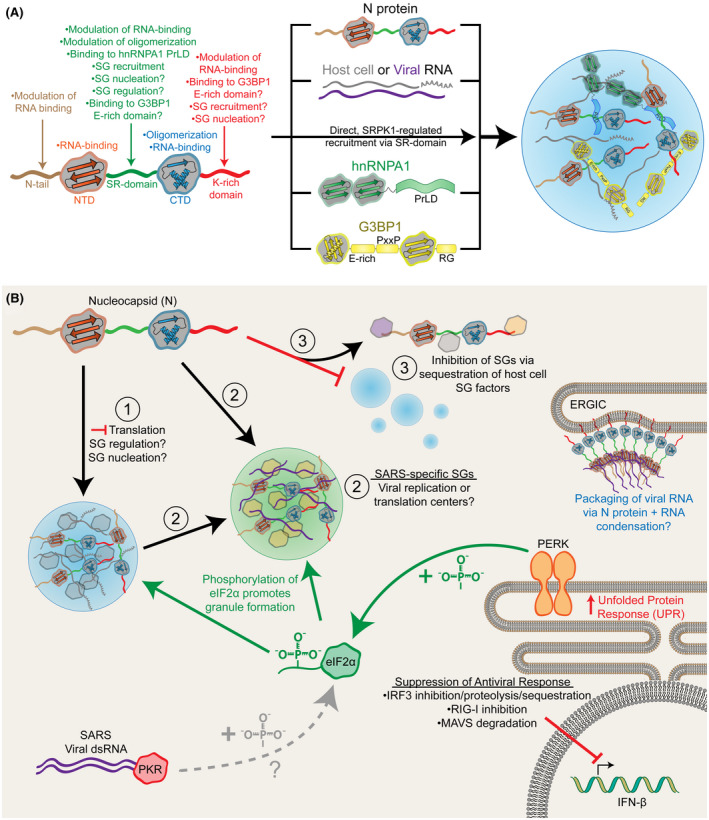FIGURE 3.

Proposed models for the influence of the SARS‐CoV‐2 N protein on the formation and regulation of biomolecular condensates. A, Putative or directly observed interactions between the SARS‐CoV‐2 N protein and stress granule (SG) components. B, Three possible models for how the N protein of SARS‐CoV‐2 could affect stress granules in host cells: (1) N protein could be recruited to canonical host cell stress granules, which could have subtle or no effect on stress granules (“passive observer”), or could alter stress granule function by contributing to translation suppression, altering stress granule interactions, or remodeling stress granules; (2) N protein could recruit specific stress granule components to form unique, SARS‐specific stress granules that could serve as sites of viral translation or replication; or (3) N protein could inhibit the formation of canonical host cell stress granules by sequestering critical stress granule components. SARS‐CoV‐2 may inhibit the typical stress granule‐associated antiviral responses in host cells by suppressing downstream events that activate IFN‐β expression. Additionally, the features of the SARS‐CoV‐2 N protein that facilitate interaction with stress granules may also facilitate biomolecular condensation of N protein and genomic RNA during nascent virion formation at the ER‐Golgi intermediate compartment (ERGIC)
